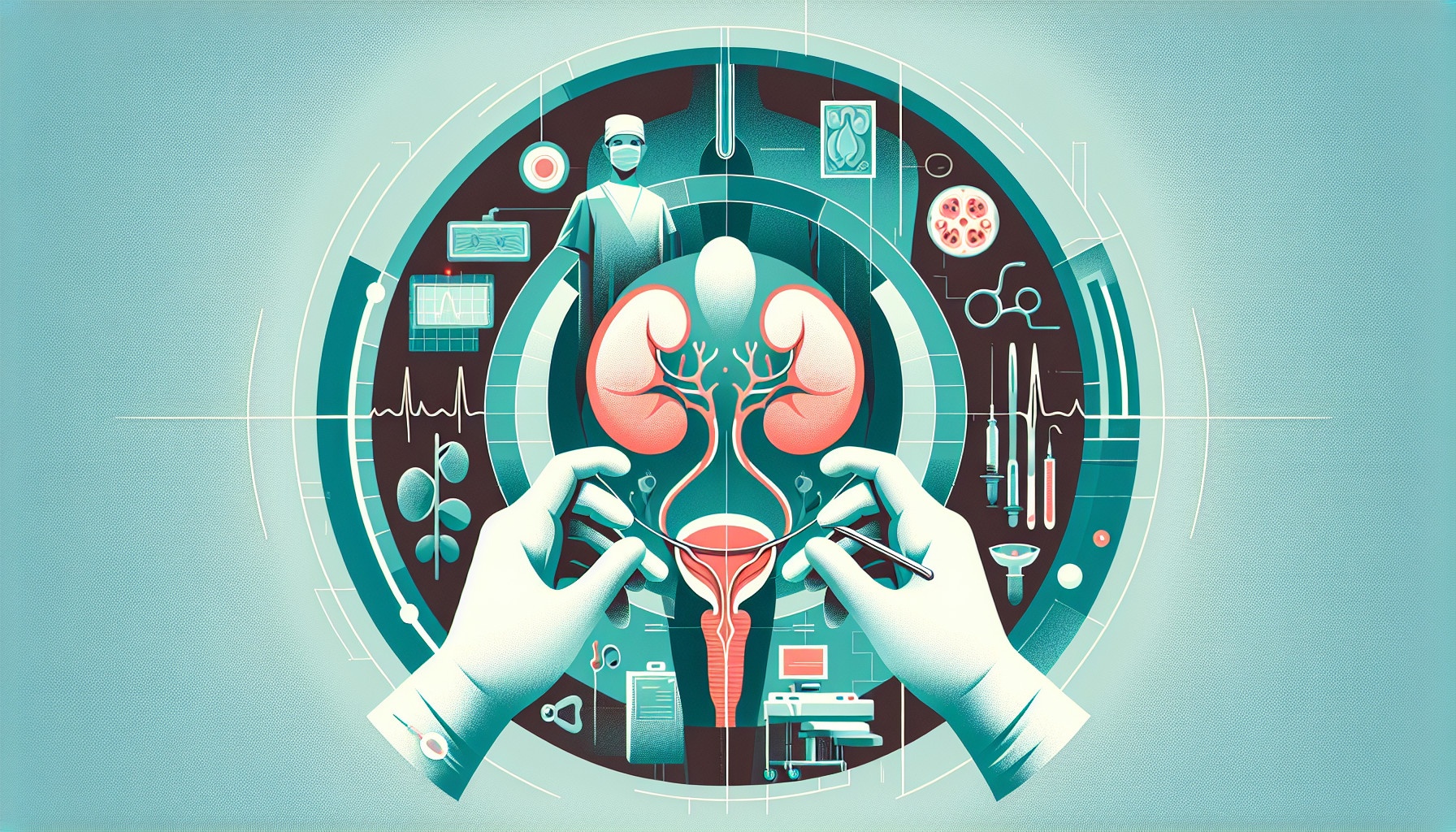Our Summary
This research paper discusses a unique case of a bladder abnormality known as “hourglass bladder,” which is when the area connecting the bowel segment and the bladder becomes narrow. This happened to a 14-year-old boy after a surgery called ileocystoplasty, which is performed to enlarge the bladder. The paper explains the crucial steps that need to be followed during this surgery to prevent such complications. It stresses the importance of following the procedure properly to avoid complications like the one observed in this case.
FAQs
- What is an “hourglass bladder”?
- What steps should be taken during bladder augmentation to avoid an hourglass bladder?
- What complications can arise from not adhering to the steps of augmentation cystoplasty?
Doctor’s Tip
One helpful tip a doctor might tell a patient about bladder surgery is to follow all post-operative care instructions carefully, including proper wound care, medication management, and any dietary restrictions. It is important to attend all follow-up appointments and communicate any concerns or changes in symptoms to your healthcare provider promptly. Additionally, maintaining a healthy lifestyle and avoiding activities that may put strain on the bladder can help promote successful healing and recovery.
Suitable For
Patients who may be recommended bladder surgery include those with bladder cancer, bladder stones, urinary incontinence, bladder outlet obstruction, neurogenic bladder, interstitial cystitis, or bladder diverticulum. Additionally, patients with congenital anomalies such as bladder exstrophy or small bladder capacity may also benefit from bladder surgery. In some cases, bladder surgery may be recommended as a last resort after other treatments have been unsuccessful in managing the patient’s symptoms.
Timeline
Before bladder surgery:
- Consultation with a urologist to discuss the need for bladder surgery and potential risks and benefits.
- Pre-operative testing such as blood tests, urine tests, and imaging studies to evaluate the bladder condition.
- Pre-operative instructions from the healthcare team regarding fasting, medications to avoid, and other preparations for surgery.
After bladder surgery:
- Recovery in the hospital with monitoring of vital signs and pain management.
- Gradual introduction of fluids and food as tolerated.
- Monitoring for any signs of infection or complications such as bleeding or urine leakage.
- Physical therapy or rehabilitation to help regain bladder function and pelvic floor strength.
- Follow-up appointments with the urologist for post-operative care and monitoring of bladder function and healing.
- Long-term follow-up to monitor for any long-term complications or need for further interventions.
What to Ask Your Doctor
- What specific type of bladder surgery will I be undergoing?
- What are the potential risks and complications associated with this surgery?
- How long is the recovery period expected to be?
- Will I need to make any lifestyle changes or follow a specific post-operative care plan?
- What is the success rate of this surgery for my particular condition?
- Are there any alternative treatment options available that I should consider?
- How many times have you performed this type of surgery and what is your success rate?
- Will I need to follow up with a specialist or undergo any additional tests after the surgery?
- Are there any long-term effects or complications I should be aware of?
- What can I do to optimize my chances of a successful outcome from the surgery?
Reference
Authors: Alhazmi HH. Journal: Ann Saudi Med. 2015 Sep-Oct;35(5):403-5. doi: 10.5144/0256-4947.2015.403. PMID: 26506976
